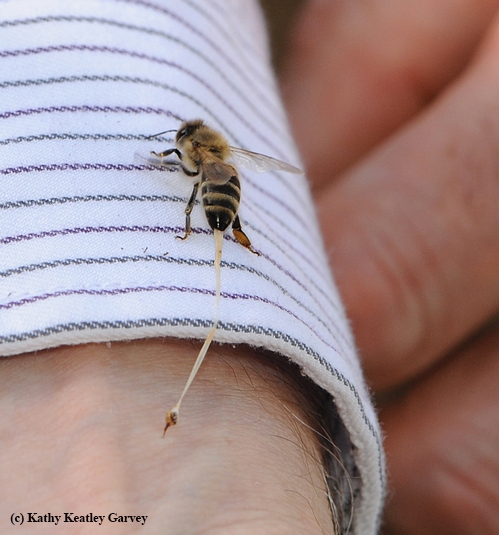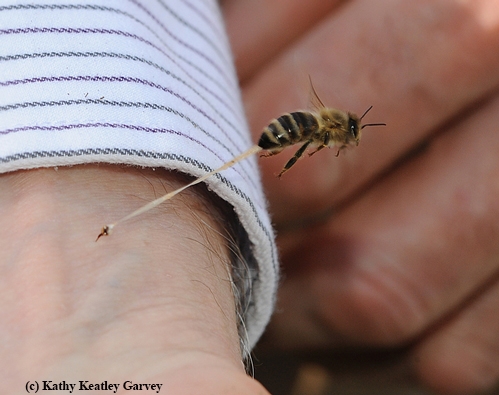When some folks think of a honey bee, they immediately think of stings.
Not pollination, not honey, not colony collapse disorder, but stings.
To beekeepers, stings are a minor irritation, or perhaps not an irritation at all. It's just something that happens in an occupation. "It's like grease on a mechanic's hands," says bee breeder-geneticist Susan Cobey, manager of the Harry H. Laidlaw Jr. Honey Bee Facility at the University of California, Davis.
Or, I imagine, like flour on a baker, dirt on a gardener or sweat on an athlete.
It happens.
Yesterday, when Extension Apiculturist Eric Mussen of the UC Davis Department of Entomology faculty was opening a hive at the UC Davis apiary, a bee landed on his wrist.
"Bee on my wrist," he said, knowing I had my macro lens at the ready.
The bee, defending her hive, did what a good guard does--she stung him. When that happens, you scrape the stinger off with your fingernail so the barbed stinger with its attached venom sac doesn't continue to pump venom.
When a worker bee stings and pulls away from her victim, part of her anatomy pulls away, too. She dies, often within minutes.
What you usually see is only the stinger. Not this time. The camera lens caught the barbed stinger and the stretched tissue.
Attached Images:

